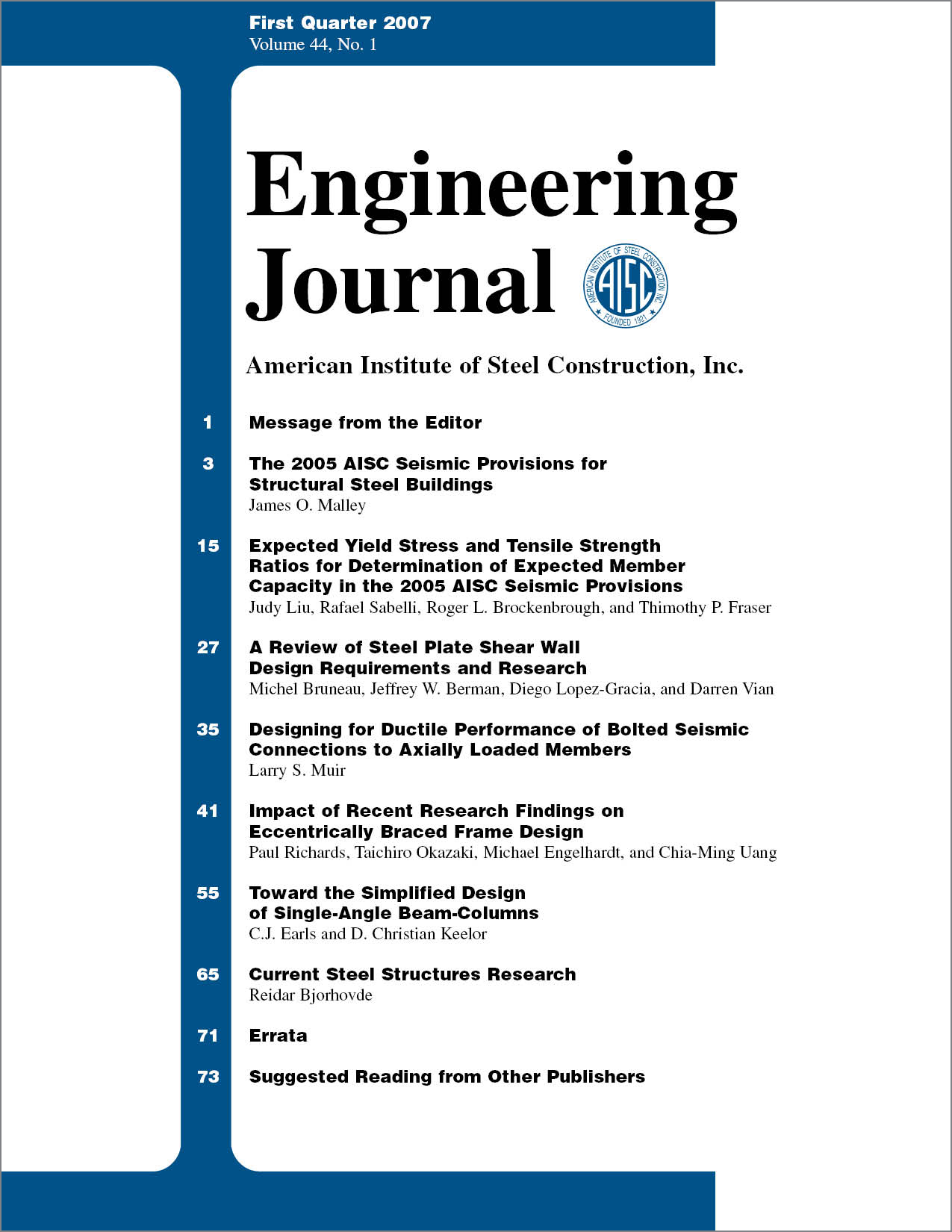Impact of Recent Research Findings on Eccentrically Braced Frame Design
DOI:
https://doi.org/10.62913/engj.v44i1.896Keywords:
Seismic Design, Specifications, Codes and Standards, Lateral Systems, ResearchAbstract
Design provisions for eccentrically braced frames (EBFs) are based largely on results from ASTM A36 links tested at the University of California, Berkeley (UCB) in the 1980's. To address issues related to the use of ASTM A992 steel in modern EBFs, new experimental testing and finite element modeling of EBF links were performed. A total of twenty-four link specimens were tested at the University of Texas at Austin (UTA). UTA experimental data was used to validate finite element modeling techniques used in a parametric study conducted at the University of California, San Diego (UCSD). This paper highlights findings from these experimental and analytical investigations. The impact of flange width-thickness ratio, intermediate stiffener spacing, and loading protocol on link rotation capacity and failure mode are discussed. Recommendations are given for intermediate stiffener detailing that will improve link rotation capacity. Results justify the flange width-thickness requirement for EBF links in the 2005 AISC Seismic Provisions for Structural Steel Buildings, which is relaxed from the previous limit and will facilitate more economic design of EBFs. The studies also indicate that the link overstrength value adopted in the Provisions, which was originally based on A36 links, is equally valid for A992 links.

